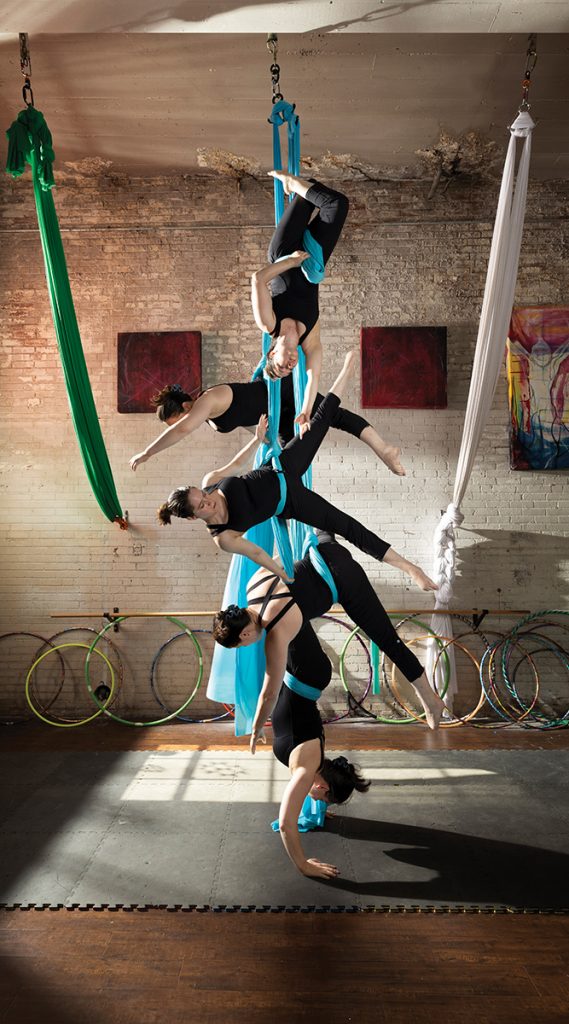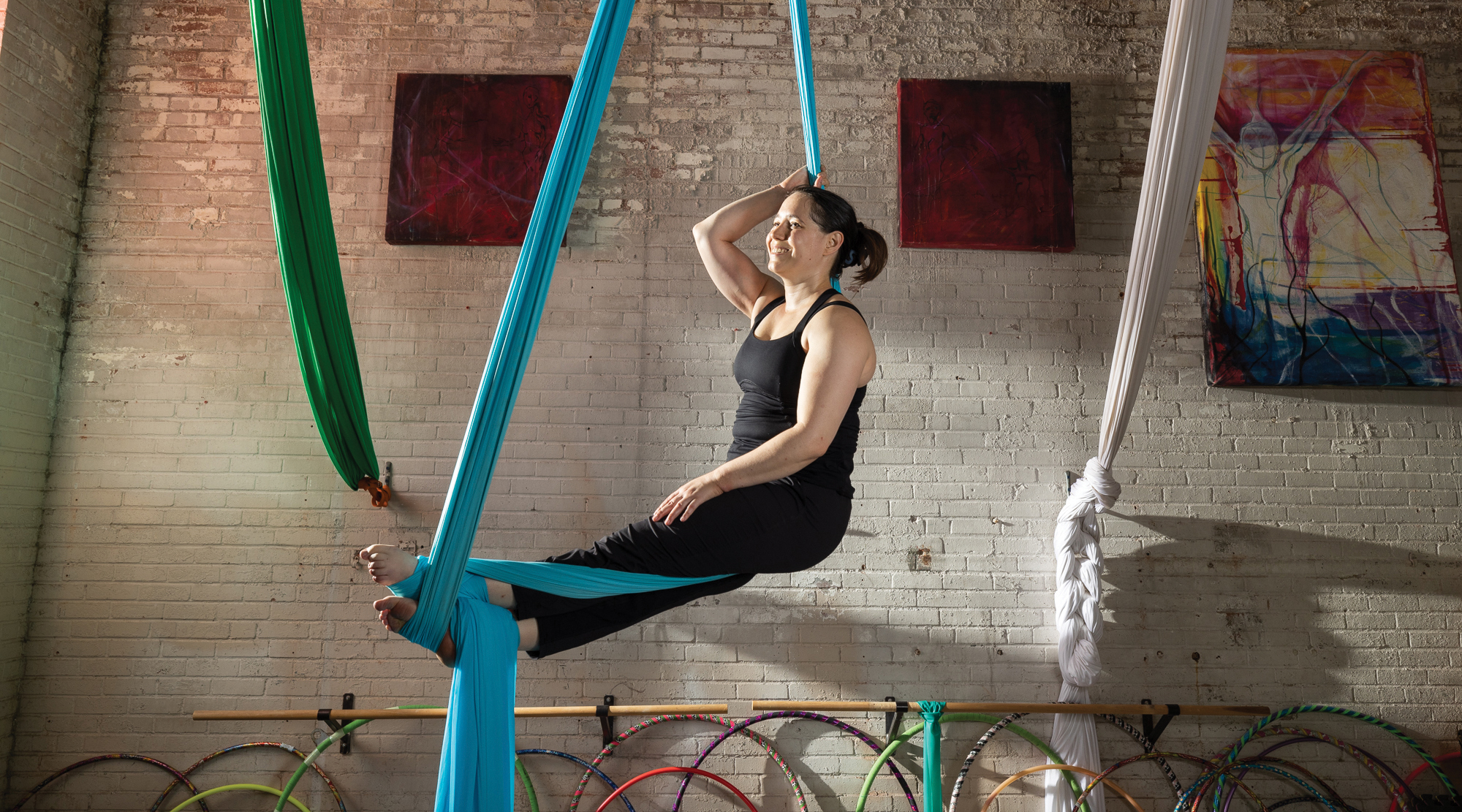When Dr. Elizabeth Finn leaves the lab, she likes to leave the ground, too.
If you stretched out the coil of DNA that’s wound into any of your trillions of cells, it would measure roughly 6½ feet. Or, about 18 inches longer than Dr. Elizabeth Finn.
A geneticist and molecular biologist, Finn joined OMRF in 2022. She’s investigating how our cells organize these long strands of DNA within each nucleus, knowledge that’s key to understanding how certain conditions like cancer and neurodegenerative diseases occur.
Outside of OMRF, Finn experiments with how knotting and folding a different pair of strands – nylon ones – can hold up a human body: hers. “When I’m not in the lab, find me at the circus,” she says.
An aerial artist was a first for OMRF’s Cell Cycle & Cancer Biology Research Program, says Dr. Gary Gorbsky. He laughs recalling learning about Finn’s high-flying hobby while recruiting her from the National Institutes of Health. “We thought it was great that someone who could run away to the circus would want to join our department instead.”

Finn got her start in acrobatics as a preschooler. “I informed my mom she was signing me up for gymnastics,” she remembers. The gym’s acrobatics coach soon approached Finn’s mother to recruit the youngster to his team. “She can focus,” the coach told Finn’s mom. “Most 5-year-olds can’t.”
With the same concentration she would later apply to science, Finn would go on to win a national championship at age 10 in acrobatics, which resembles gymnastics but also incorporates lifts and tosses seen in cheerleading. That eventually led her to the diving squad at the University of Chicago, where she majored in biochemistry.
“I had to take a course in musical anthropology as part of my core curriculum. It was terrible,” says Finn. Its redeeming factor was her final project: observing a local circus troupe that was designing a new show. She capped the assignment by attending their first performance. Before the group took the stage, Finn found herself alone in the quiet theater. A trapeze dangled from the rafters.
“I just got on it. I immediately flipped myself upside down and hung from my ankles,” she remembers. “The director came out from backstage and said, ‘You should take classes.’”
In the years that followed, Finn embraced climbing the smooth nylon of aerial silks, spinning on long, cotton straps that require the precision of gymnastics rings, and occasionally soaring on the trapeze. They provided an outlet from her demanding course load, first as an undergraduate and later while completing her Ph.D. in genetics at Stanford University.
During her postdoctoral training at the NIH, Finn found yet another circus home in Washington, D.C. Among her most memorable performance venues were the Kennedy Center and the National Mall. At 1600 Pennsylvania Avenue, she donned a neon green bird costume and spun on a trapeze to entertain military families enjoying the White House’s Halloween festivities below her.
Researchers who spend their free time running, cycling or hiking often say that exercise invites their best thinking. Their minds wander. Breakthroughs follow.
But for Finn, when she’s airborne, it’s the only time she’s not thinking about science. “At 30 feet in the air, my mind has to be locked on my next move. My focus is the only thing between me and the ground.”
Still, Dr. Tom Misteli, Finn’s former mentor at the NIH, sees threads that link Finn’s aerial feats to her more earthbound pursuits.
“There’s an element of creativity and a very intellectual part to it. She has to be very precise and controlled. That also characterizes her as a scientist.”
At the NIH, Finn found that not just every cell, but every chromosome, folded itself differently. The study made the cover of the journal Cell. Science, perhaps the most influential of all scientific journals, published a review of the work.
At OMRF, she wants to understand what this means for our DNA’s function and how it might be connected to conditions like cancer and epilepsy. The answers remain up in the air. Which, for Finn, should be perfect.
—
Read more from the Summer/Fall 2023 issue of Findings
Oklahoma’s Treasure
Voices: Jim and Norma Freeman
Ask Dr. James: Preventing Alzheimer’s Disease
Matters of the Heart
Unfinished Business
77 for 77
A New Beginning
End of an Era



